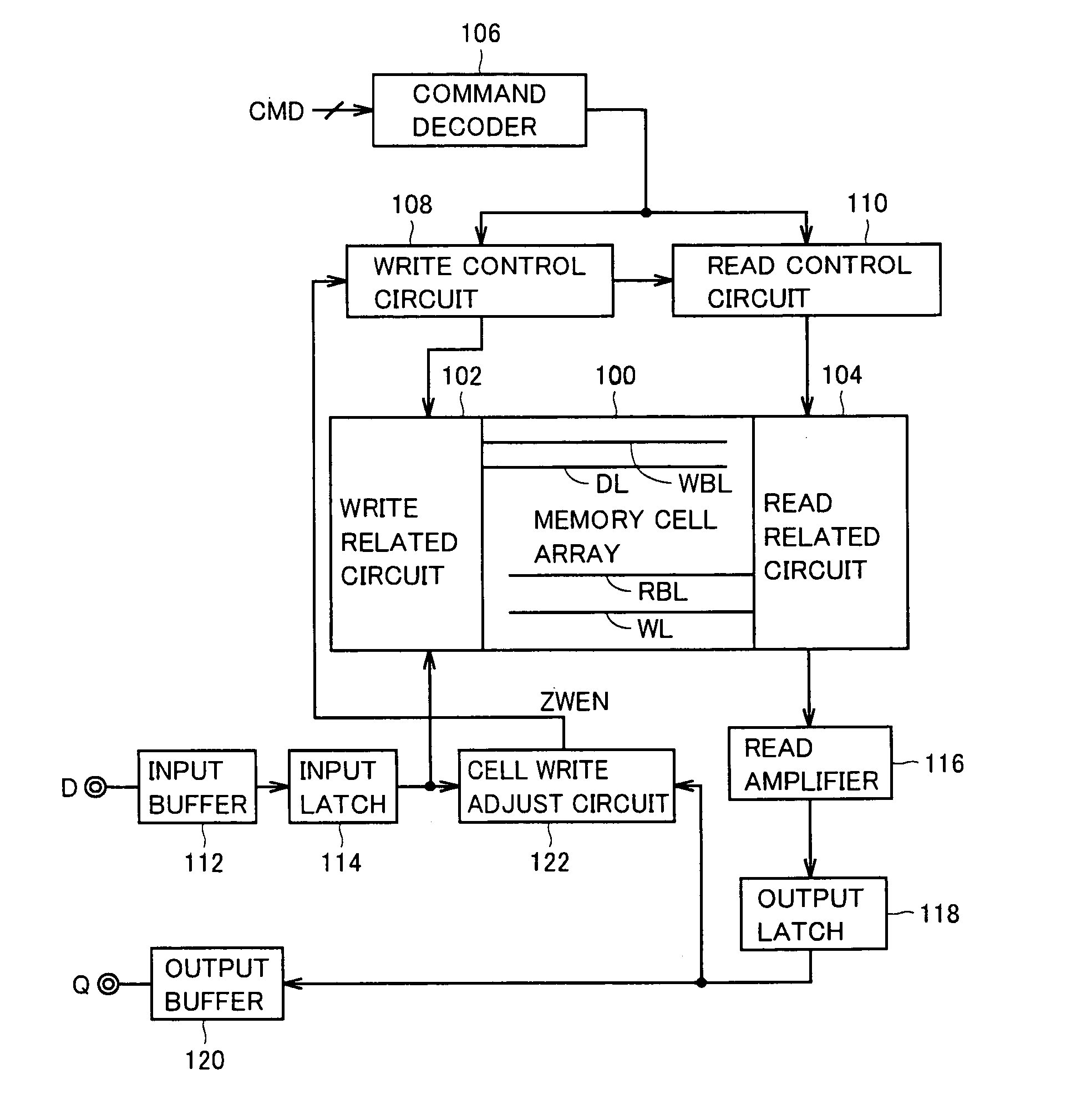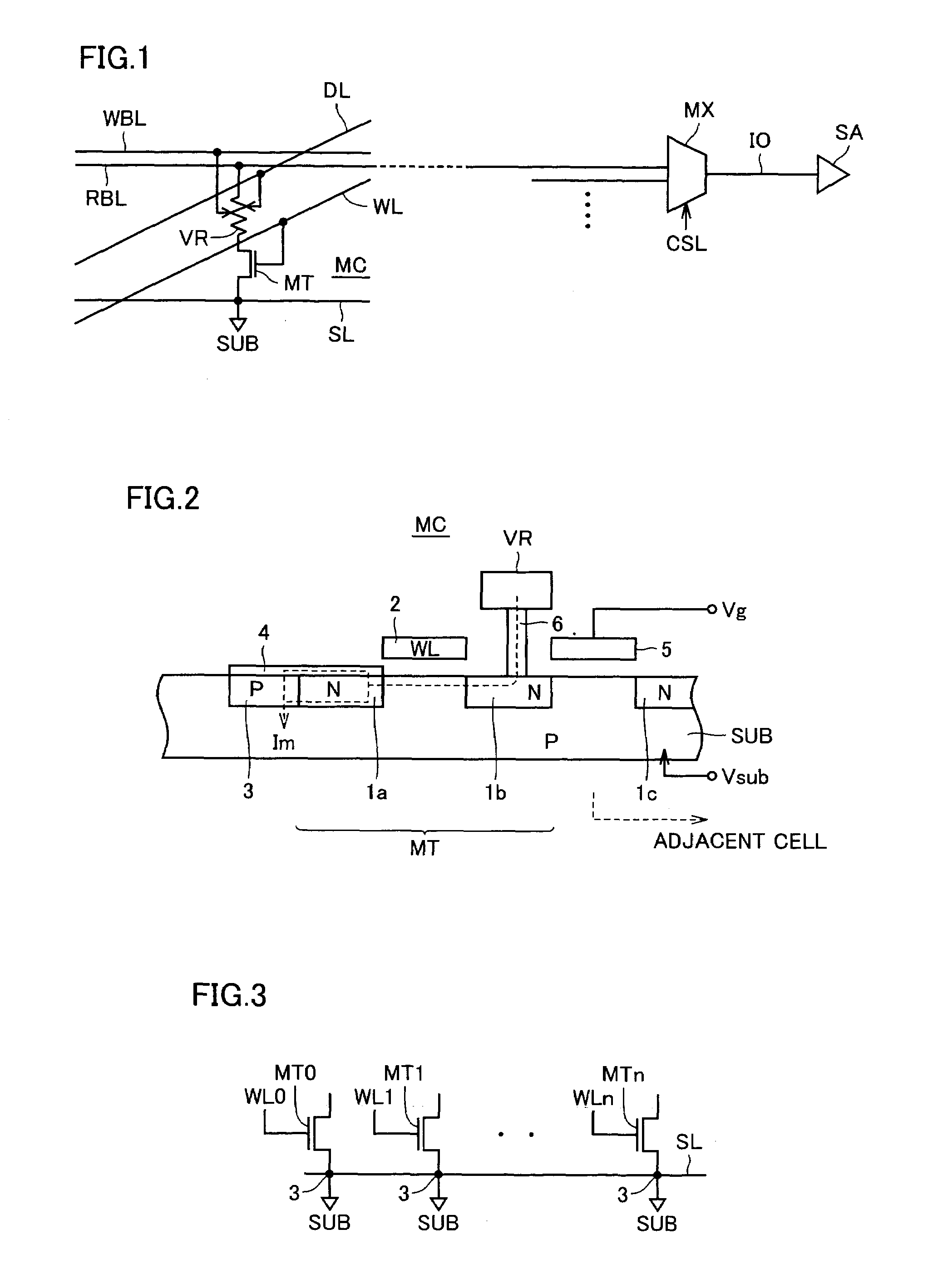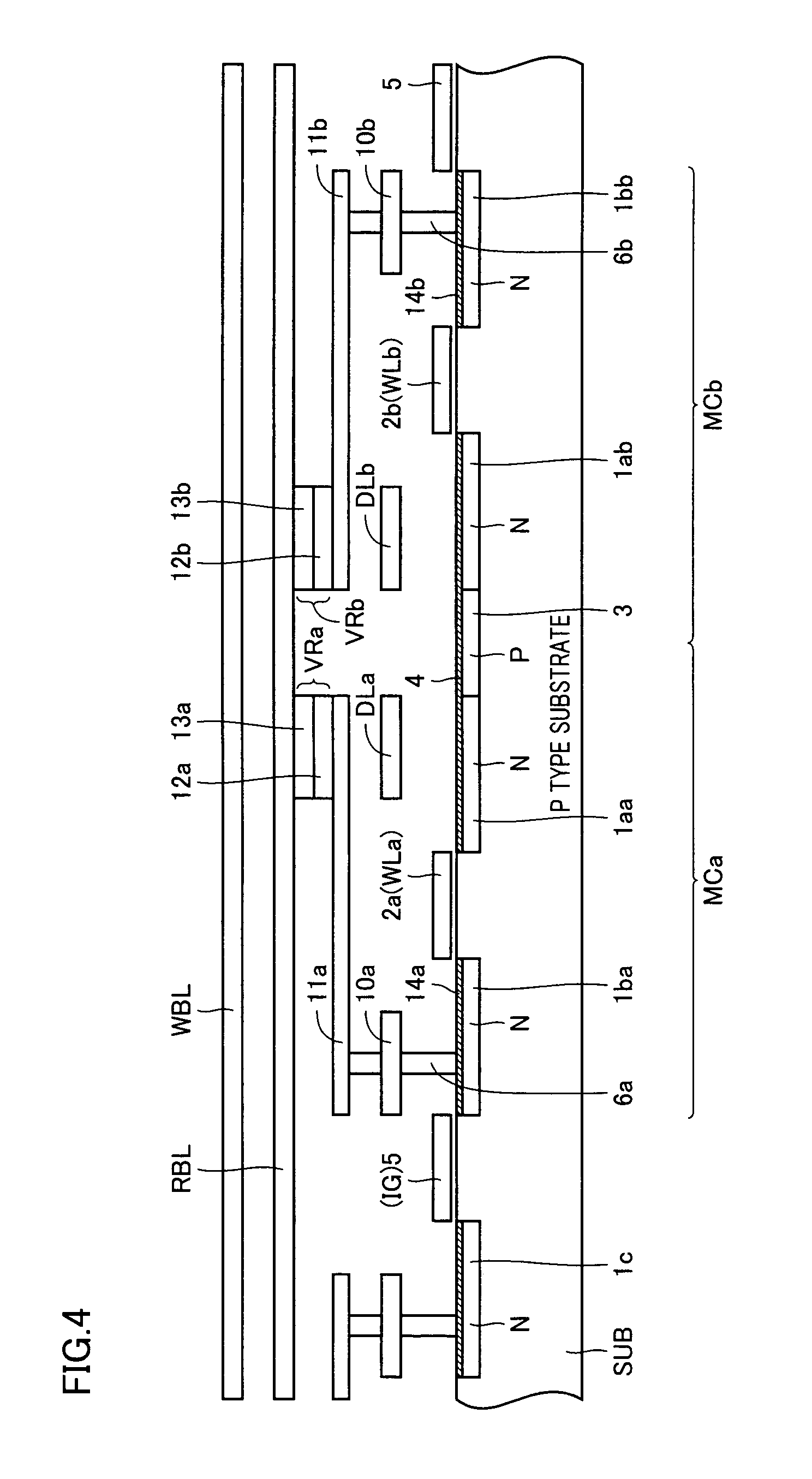Non-volatile semiconductor memory device allowing concurrent data writing and data reading
a non-volatile, memory device technology, applied in the direction of information storage, static storage, digital storage, etc., can solve the problems of limited memory cell current, insufficient read current supply, and inability to read fast data, etc., to reduce accessing time
- Summary
- Abstract
- Description
- Claims
- Application Information
AI Technical Summary
Benefits of technology
Problems solved by technology
Method used
Image
Examples
first embodiment
[0052]FIG. 1 schematically shows a configuration of a portion related to one memory cell of a non-volatile semiconductor memory device according to a first embodiment of the present invention. A memory cell MC is arranged corresponding to an intersection of a digit line DL as well as a word line WL and a write bit line WBL as well as a read bit line RBL. In the first embodiment, write bit line WBL for supplying a write current in data writing to memory cell MC, and read bit line RBL for supplying a read current to memory cell MC in data reading are separately provided.
[0053]Write bit line WBL and read bit line RBL are arranged in parallel, and word line WL and digit line DL are arranged in parallel.
[0054]Memory cell MC includes a variable resistance element VR having its resistance value set in accordance with storage information, and a select transistor MT for coupling variable resistance element VR to source line SL in accordance with a signal on word line WL. Variable resistance ...
second embodiment
[0094]FIG. 10 schematically shows a configuration of a memory cell of a non-volatile semiconductor memory device according to a second embodiment of the present invention. In FIG. 10, a memory cell MC includes a variable resistance element VRP formed of a phase change element changing its crystal state in accordance with storage data, select transistors TRa and TRb connected in parallel between variable resistance element VRP and source line SL. To the gates of select transistors TRa and TRb, word lines WL are connected, and word lines WL are supplied with the same select signal. Similarly to the first embodiment, source line SL is electrically coupled to substrate region SUB through an impurity region.
[0095]Variable resistance element VRP is connected to bit line BL. Variable resistance element VRP is formed of, for example, a GST (Ge—Sb—Te) film, and its crystal state changes between a crystalline state and an amorphous state in accordance with storage data. In the crystalline sta...
third embodiment
[0110]FIG. 14 schematically shows a configuration of a main portion of a non-volatile semiconductor memory device according to a third embodiment of the present invention. In FIG. 14, memory cells MC equivalently arranged in three rows and three columns are representatively shown. In the arrangement of memory cells MC shown in FIG. 14, to memory cells MC aligned in column direction (X direction), a read bit line and a source line SL are arranged in pair. Specifically, a pair of read bit line RBL1 and source line SL1 are arranged extending along X direction, and a pair of read bit line RBL2 and source line SL2 are arranged extending in X direction. Similarly, read bit lines RBL3 and source lines SL3 are arranged extending along X direction.
[0111]In the array of memory cells MC, the memory cells aligned in Y direction are coupled to different word and digit lines. In FIG. 14, word lines WL1-WL7 and digit lines DL1-DL7 are shown.
[0112]Memory cell MC includes a variable resistance eleme...
PUM
 Login to View More
Login to View More Abstract
Description
Claims
Application Information
 Login to View More
Login to View More - R&D
- Intellectual Property
- Life Sciences
- Materials
- Tech Scout
- Unparalleled Data Quality
- Higher Quality Content
- 60% Fewer Hallucinations
Browse by: Latest US Patents, China's latest patents, Technical Efficacy Thesaurus, Application Domain, Technology Topic, Popular Technical Reports.
© 2025 PatSnap. All rights reserved.Legal|Privacy policy|Modern Slavery Act Transparency Statement|Sitemap|About US| Contact US: help@patsnap.com



